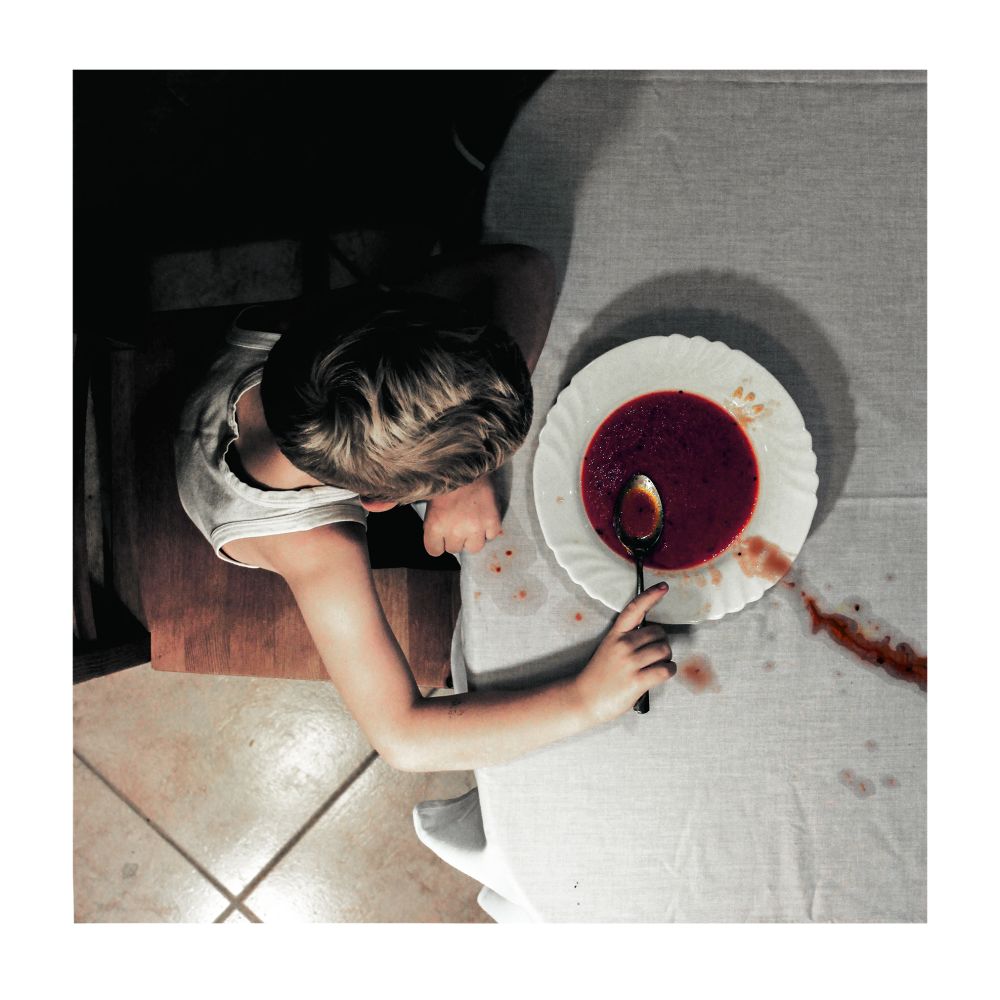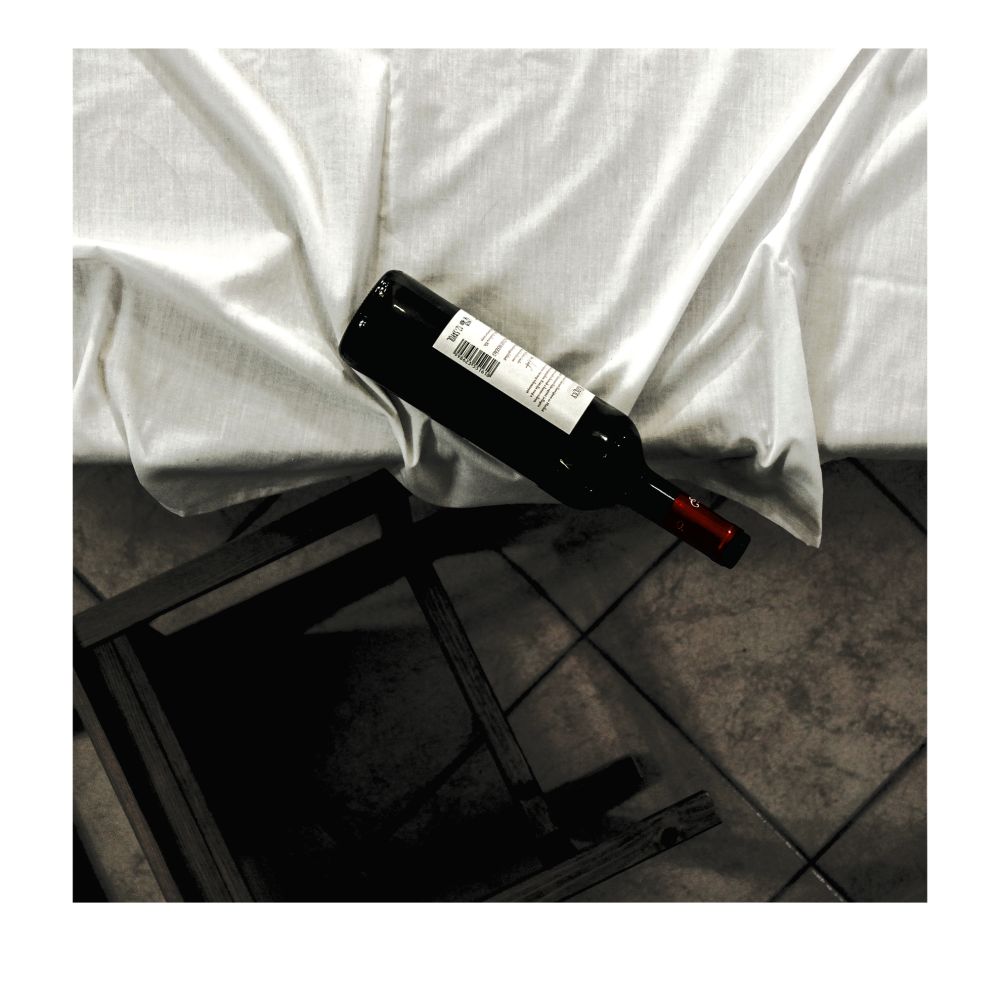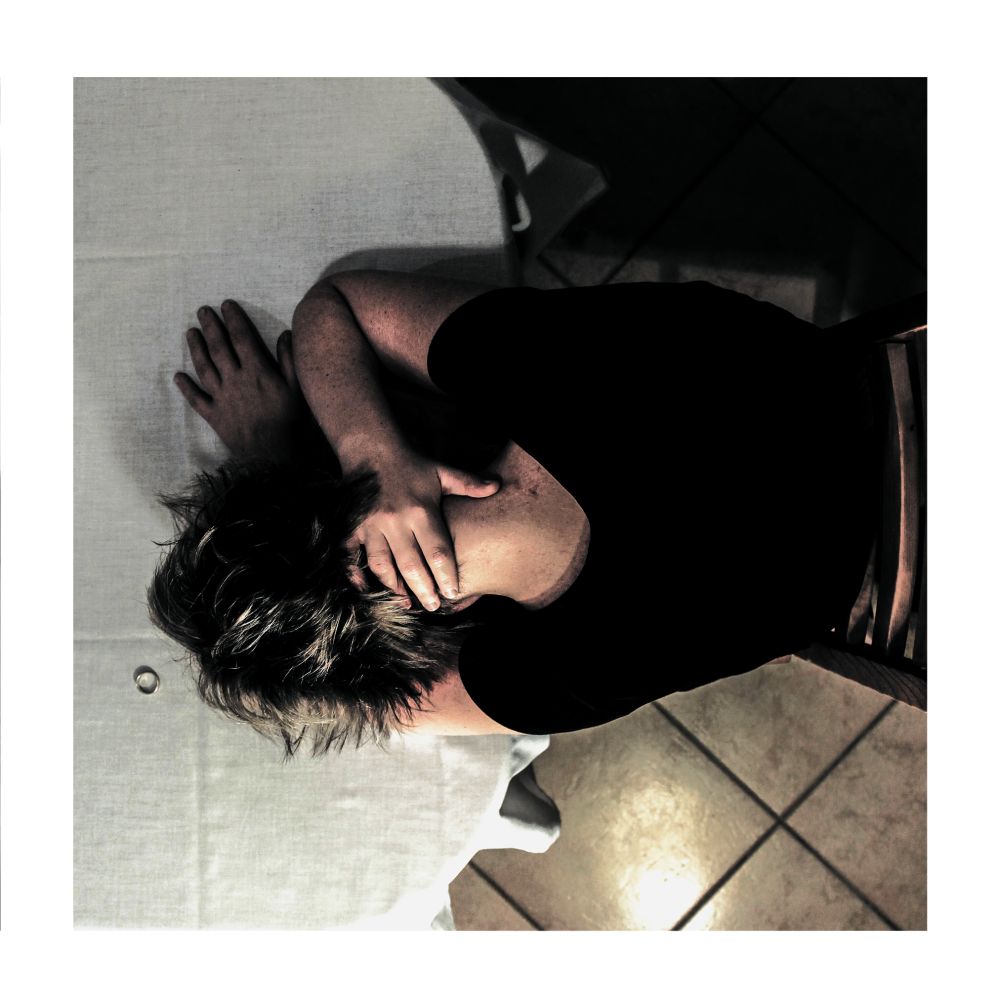TÓTH András
andris.toth@icloud.com
+36205931921
A triptichon a családon belüli erőszak és a zavart családi közösség témáját
illusztrálja. A didaktikus szimbolikán túl, -amely pl. a háromtagú család tagjai közül egy borosüveggel helyettesíti az apát- apró jelek hivatottak személyessé tenni és mélyíteni a tartalmat. Mindhárom kép egy valóságra merőleges gépállással teszi megfigyelővé a nézőt. Közelről jól látható, hogy a képek színei gondos utómunkával roncsoltak, ettől az egyetlen mozdulat (a kisfiúé) reneszánsz képeket idézően finommá és élettelenné válik, a paradicsomleves vöröse már nem is az ételé. A gyerek nem eszik, a tányér szélére alig észrevehetően az APA feliratot rakta ki. A kép hangsúlya mégis az abroszra fröccsent levesre kerül, amely ijesztően asszociatív minta. A második kép maga az alkoholizmus nemtörődömsége, a felborított szék a rend ellen fordított mégis iránytalan düh. Csak az üveg imbolyog az asztal peremén. A harmadik képen anya látható feketében, az asztalra borulva. A gyűrűsujján a gyűrű helye fehérlik. Ezekre a rejtőzködő szimbólumokra kérdezve kapjuk meg a képek fájón aktuális és nehezen megválaszolható kérdéseit.
/
The triptych illustrates the topics of domestic violance and troubled family
community. Apart from the didactic symbols (like the wine bottle replacing the father in a three-member family) certain small elements are making the content more personal and deeper. Viewers spectate all three pictures from a perpendicular angle. Observing closely, it's easy to notice that each picture's colors were disrupted during post-production, making a single motion (the little boy's) look like a sophisticated yet lifeless renaissance picture, while the color red refers to something else than the tomato soup's tone. The boy isn't eating, and it's barely noticeable that he has written the word DAD on the edge of his plate. The emphasis, however is on the spilt soup on the table cloth, providing a frightfully associative pattern. The second picture symbolizes the nihilism of alcoholism itself, the upsided chair is the pointless rage against the order of things. It's only the bottle that totters on the edge of the table. On the third image a mother, wearing black, lays on the table. The finger of the ring seems whiter with the absence of the ring itself. These hidden symbols answer to the often relevant and painful questions of the pictures.


